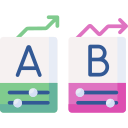Theme Spotlight: Pros and Cons of Popular Cross-Platform Development Frameworks
Chosen theme: Pros and Cons of Popular Cross-Platform Development Frameworks. Join us as we compare Flutter, React Native, .NET MAUI/Xamarin, Ionic/Capacitor, Kotlin Multiplatform, and NativeScript with candid strengths, limitations, and field stories. Subscribe and share your experiences to help others navigate the tradeoffs confidently.

Time to market versus platform perfection
Cross-platform frameworks shorten delivery by centralizing most code, which accelerates iteration and experimentation. The tradeoff is nuanced: you may ship features faster, but chasing platform polish or deeply native behaviors can require extra glue code, specialized expertise, and carefully prioritized refinement cycles.

One codebase, many devices—hidden costs
A single codebase reduces duplication, yet hidden costs emerge in plugin maintenance, platform-specific edge cases, and CI pipelines. Teams often underestimate testing breadth, device fragmentation, and the long-term overhead of aligning UX and performance expectations across operating systems with diverging design languages and capabilities.

Team skills and the hiring pipeline
Choosing a framework aligned with existing skills can be decisive. JavaScript, Dart, or C# familiarity influences ramp-up time, code quality, and recruiting. Ask your community to comment on their hiring realities, retention strategies, and onboarding lessons when adopting cross-platform stacks under real delivery pressure.
Flutter in Focus: Delightful UIs, Larger Binaries, Evolving Ecosystem
Flutter’s hot reload, Skia-backed rendering, and widget-first design yield consistent visuals across platforms. Development feels fast, animations stay smooth, and you get first-class Material and Cupertino components. Teams appreciate predictability, with fewer platform-specific UI surprises compared to thin wrappers around native views.
Flutter in Focus: Delightful UIs, Larger Binaries, Evolving Ecosystem
Binary size can be larger than pure native. Integrating advanced platform-specific APIs sometimes requires writing native channels. Certain platform views incur performance considerations, and not every plugin is equally mature across iOS and Android. Plan for profiling and device matrix testing to catch real-world quirks early.


React Native: JavaScript Speed Meets Native Bridges
JavaScript familiarity, a huge library ecosystem, and rapid prototyping win hearts. Expo streamlines tooling, while community packages offer solutions for navigation, forms, and analytics. When teams pair React Native with strong engineering discipline, they can sustain good velocity without reinventing their frontend workflows.

.NET MAUI and Xamarin: Enterprise Comfort, Occasional Platform Lag
01
Shared C# models, MVVM patterns, and integration with existing .NET services deliver cohesion. Teams reuse validation, networking, and domain logic across platforms while retaining native UI layers where needed. Strong IDE support and mature testing options help maintain quality in regulated or compliance-heavy environments.
02
App size, startup time, and alignment with cutting-edge native APIs can be challenging. Some controls feel less fluid without targeted tuning. Teams should plan for platform-specific tweaks, vigilant dependency upgrades, and a measured approach to adopting the newest OS features immediately upon release.
03
A healthcare provider consolidated Android and iOS apps under Xamarin, later moving to .NET MAUI. They saved months of duplicated work but allocated time for accessibility refinements and biometric nuances per platform. If you’ve taken a similar path, comment with the training and testing strategies that helped most.



Compelling strengths
Kotlin Multiplatform shares domain logic across Android and iOS while keeping native UIs, avoiding the uncanny valley. NativeScript grants direct access to native APIs from TypeScript, enabling deep integrations with fewer bridges. Both reward teams needing fine-grained control and strong platform parity.
Potential drawbacks
Setup complexity, evolving documentation, and specialized debugging can slow newcomers. With Kotlin Multiplatform, you still maintain two UI layers. For NativeScript, plugin availability and version alignment matter. Plan for robust architecture boundaries, solid testing, and realistic onboarding timelines to reduce operational risk.
Story of a pragmatic compromise
A media app shared recommendation logic via Kotlin Multiplatform while preserving fully native player screens for best performance. Another team used NativeScript to unlock advanced camera APIs quickly. If you’ve combined shared logic with native UIs, comment with patterns that kept your codebase maintainable over time.

